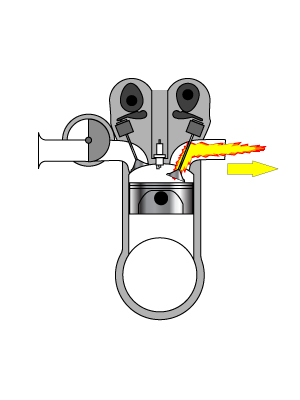CMSMJ1 wrote:It has to be linear to be driven correctly.
No..how does this work?
Advancing or retarding ignition is not a magic bullet. Ignition advance is a tool to allow for the ignition of the fuel before the compression does it for you. It does not affect in a useable way the ability to produce the power in the engine by an appreciable amount. it is a tool to prevent detonation which is bad for power, the valves and the health of your motor.
I have no doubt that they do some damage to the engine by this trick but we are talking single digit laps per engine here. You do not need the trick in most gears. So they probably only do it in third, fourth and fifth gear. As I have also said it could also be possible that they reduce the amount of fuel which also would result in less power IMO. Unfortunately I'm no expert for the firing technology of racing engines. I would have to leave that to the experts to determine. But I'm pretty sure that teams can fiddle the SECU with multi dimensional engine maps to their hearts content. Have you heard an engine sing the national anthem? One should also read scarb's blog on this.
http://scarbsf1.wordpress.com/2010/07/1 ... s-q3-pace/
Here is his picture of Map-Q retarding.
 http://www.atlasf1.com/99/oct06/burckmyer.html
http://www.atlasf1.com/99/oct06/burckmyer.html An eleven year old report on how F1 engines use ionization curve feed back to optimize ignition. At that time they were already tuning the fuel injectors for optimum ignition. McLaren electronics offer an ICU-108 module for ion current measurement for their F1 SECU.
They decided to employ a strobe circuit with the small components producing high current along with capacitive discharge to produce high voltage to produce the plasma spark.
They succeeded in producing a massive spark for the same overall energy as a conventional spark, and the system proved much more effective at igniting the air/fuel mixture. Further, the package was not significantly larger than a conventional ignition.
The system still lacked advanced control, however. VanDyne and Porreca worked over a misfire detection circuit used by Saab. It employed a simple design that used ionic conductivity to detect misfires. Porreca and VanDyne rationalized the system by which this was accomplished, and quickly devised their own circuitry.
Their system did not simply measure whether or not there was a misfire, however. The circuit they designed enabled the spark plug to detect full ionization curves for each cycle, data which could be correlated to cylinder pressure and used for engine tuning diagnostics. Using their ionization feedback, Adrenaline has developed a system that, when integrated to the cusomer's ECU, can monitor and control individual cylinder firings, adjusting the plasma spark timing, injector pulsewidth, and air/fuel ratio-on an individual cylinder, individual cycle basis.
Because of their design successes, and because their system has had tremendous appeal in test sessions, Adrenaline's SmartFire Plasma-12 ignition is currently under consideration at several F1 teams.






